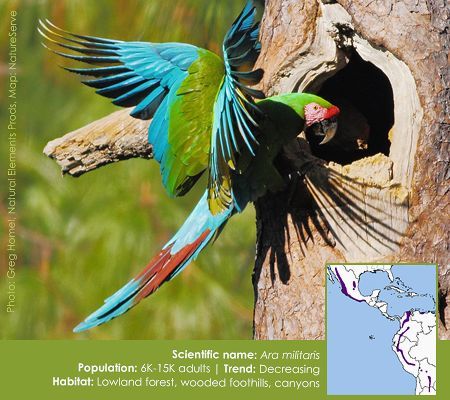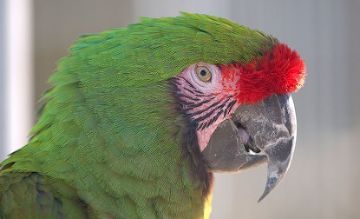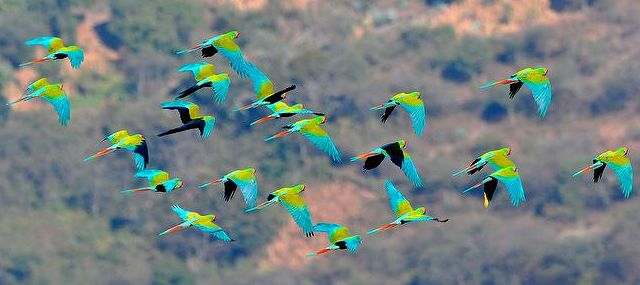 |
Canku Ota
|
 |
|
(Many Paths)
|
||
|
An Online Newsletter
Celebrating Native America
|
||
|
July 2015 - Volume 13
Number 7
|
||
|
|
||
|
Military Macaw
(Ars Militaris) |
||
|
by beautyofbirds.com
|
||
The Military Macaws (Ara militaris) received their name when they were first imported into Europe by military personnel; also some suggest that this species was named for the overall "army or olive green" color of its plumage. At first glance, these parrots may not be as striking as some of their cousins, but these parrots are beautiful nonetheless. They are fun-loving and sociable, and many of those kept as pets have distinguished themselves as excellent talkers. Distribution, Status, Life in the Wild: They live in pairs, in families, or in large flocks, usually roosting in the highest outer branches of trees or foraging for fruits and nuts. They are usually easily identified even out of sight by their loud screeching and croaking.
They were once very common in Mexico, but are now listed as an endangered species due to the clearing of their habitat for agriculture and capture for pets. While the remaining two populations are not endangered, the entire species has been listed on Appendix I of CITES to assure protection of the northernmost race. BirdLife International classifies this species as "Vulnerable". The main threats are habitat loss and domestic trade. The current population is estimated at 10,000 to 20,000, and is decreasing. In the wild, their breeding season stretches from about January to March. The female can lay as many as four eggs which are incubated for about a month, 28 days before they hatch. The female is the only one who tends the eggs and the young. Captive birds readily hybridize with related species
Subspecies and Ranges:
Description: The plumage is mostly green, except for the red tuft of feathers on the forehead (behind the cere of the beak) , white cheek patches with tiny black feathers, bluish-red primary wing feathers, and tail feathers that are brown red above and yellow underneath. The plumage of young birds is duller compared to the adults'.
Similar Species: Similar to Great Green or Buffon's Macaw (A. ambigua) - except for being smaller. Military Macaws as Pets: It can get nippy and thus requires more attention and training to maintain a pleasant nature. Militaries do well in a large macaw cage as an indoor pet. They enjoy toys, especially wood items that they can chew. They are quite capable talkers and can be easily trained, including being potty trained to the cage. |
||||||||
|
|
||
|
|
||
| Canku Ota is a free Newsletter celebrating Native America, its traditions and accomplishments . We do not provide subscriber or visitor names to anyone. Some articles presented in Canku Ota may contain copyright material. We have received appropriate permissions for republishing any articles. Material appearing here is distributed without profit or monetary gain to those who have expressed an interest. This is in accordance with Title 17 U.S.C. Section 107. | ||
|
Canku Ota is a copyright ©
2000 - 2015 of Vicki Williams Barry and Paul Barry.
|
||
 |
 |
|
|
The "Canku
Ota - A Newsletter Celebrating Native America" web site and
its design is the
|
||
|
Copyright ©
1999 - 2015 of Paul C. Barry.
|
||
|
All Rights Reserved.
|
||



